0 Introduction
In February 2016, the National Development and Reform Commission, the State Energy Bureau, and the Ministry of Industry and Information Technology jointly issued “The Guiding Opinions on Promoting Internet Plus Smart Energy Development.” Internet and smart energy (energy internet) is a new form of energy industry development that is deeply integrated with internet, energy production, transmission, storage, consumption, and energy markets.It is of great significance as it seeks to increase the proportion of renewable energy use, promote clean and efficient utilization of fossil energy, promote the opening of the energy market, and industrial upgrading.In order to achieve the strategic goal of building an international firstclass energy Internet with Chinese characteristics, the State Grid Corporation of China has actively created an energy internet ecosystem widely connecting internal and external,upstream and downstream resources, and developed a “onestop service” intelligent energy comprehensive service platform to support the primary operations of various elements of the energy Internet, thus establishing a jointly built, shared and mutually beneficial energy Internet ecosystem.
To better serve the construction of the energy Internet,researchers have conducted research on key technologies,platforms, and potential applications of the energy Internet.References [1-6]describe the basic concept, architecture,typical functions, and key technologies of the energy Internet of Things (IOT).Reference [7-9]designs a multi-energy scheduling optimization strategy based on an evolutionary game; and multi-scaling from the aspects of electricity gas,electricity heat, and energy storage, to improve the flexible regulation ability of comprehensive energy systems and reduce the operation cost of power generation equipment.Reference [10]proposed a basic framework and possible approaches to realize the value of the energy Internet based on three aspects: energy integration, information integration,and business integration.Reference [11]conducted research on key technologies such as multisource heterogeneous data processing and storage, data computing, agile development,and automatic deployment of energy Internet operation platforms; integrated data such as marketing, dispatching,power distribution, and environment; and supports indepth analysis and mining services of power consumption data.References [12,13]proposed methods such as access and remote control of large-scale heterogeneous terminals,integration, and distributed processing of multisource heterogeneous data, and distributed cooperation of multiagent heterogeneous systems.References [14-16]put forward schemes for building energy Internet data support platforms, energy Internet research platforms, and energy Internet data transactions, respectively.References [17-19]carried out research on energy Internet blockchain trading,complex dynamic network models, and ecosystems.As the energy Internet operation platform involves large-scale users, many types of service subjects, and complex business analysis scenarios, robust and dynamic dealing with a large number of concurrent users and scheduling thousands of computing and analysis tasks are key to building the service capacity of the energy Internet operation platform.
Large-scale platform scheduling is generally divided into resource scheduling and task scheduling.Resource scheduling efficiently manages and uses computing and storage resources.Task scheduling assigns tasks to appropriate computing resources to complete the task scheduled.A normal user service process is as follows: the user submits the task to the platform, the task scheduler allocates the task to the appropriate computing resources for execution, and the result is fed back to the user after the task is completed.The platform tasks are divided into mutually independent and interdependent tasks [20].Interdependent tasks are mainly analyzed using directed graphs [21].Cluster-based and copy-based algorithms have been proposed in the literature for task scheduling [22, 23],but they are not applicable to independent task scheduling.Reference [24]proposed an improved algorithm based on the min-min algorithm to improve the service quality of a distributed platform [25].The task-scheduling problem is NP-hard, and a heuristic algorithm can solve this type of problem effectively.Reference [26]proposed a fogcomputing task-scheduling method based on a genetic ant colony algorithm.Compared with the genetic algorithm,particle swarm optimization (PSO) has a faster convergence speed and can optimize multi-objectivity and easily distributed operations [27].In this study, the optimized PSO algorithm was used to solve the large-scale task-scheduling problem of an energy Internet operation platform.
The concurrent processing of massive user access is a technical problem faced by large platforms.Reference[28]carried out the research and application of a highconcurrent access server based on Nginx and proposed a load-balancing algorithm based on a prediction model and independent training nodes.Reference [29]conducted a comparative study on the principle and strategy of Nginx high-concurrency load balancing, analyzed the working model of Nginx, and studied different load-balancing strategies, which is of great significance to the development of practical application servers.References [30,31]put forth a high-concurrency processing technology scheme from the perspective of file and storage systems.As the aforementioned studies were carried out using only certain technologies of concurrent access processing, the technical solutions provided therein are not applicable for high-concurrent access processing, which requires a concurrent processing solution based on load balancing,data processing, and other aspects to resolve large-scale user access processing problems.
First, this study analyzes the business application and technology aspect of the energy Internet operation platform, conducts research on distributed task-scheduling technology, and forms a task-scheduling technical solution based on the PSO algorithm.Finally, based on the multiuser concurrent access processing flow, an overall technical solution for massive user concurrent processing is formed.The technical solution method proposed in this paper can efficiently realize large-scale task scheduling of energy Internet operation platforms and solve the problem of concurrent access and processing of massive numbers of users.Based on the technical solution, the components are integrated into the construction of the energy Internet operation platform, which serves energy users, enterprises,suppliers, and government businesses.
1 Energy Internet operation platform
The energy Internet operation platform considerscustomers as the core pillar, with ecological conservation as the goal, and product and service innovation as the key,for providing services to energy users, energy enterprises,suppliers, and the government.The overall business architecture of the energy Internet operation platform includes business service, application support, platform support, network, and perception layers as follows:
1) The business service layer provides business services for various users of the platform through a unified service portal, including energy consumption analysis, energy operation, energy transaction, and economic analysis.Energy consumption analysis provides energy-saving suggestions for enterprises and individual users based on energy consumption data; energy operation provides new energy consumption, source network load storage operation,energy internet simulation, and other business services;the energy trading business provides energy trading management and other services for energy customers,service providers, and partners; the economic analyses of business analyzes the development of the national economy and industry based on energy data and provides policymaking and decision-making support for the government.
2) The application support layer provides application service support for businesses, including customer management, supplier management, transaction management, equipment management, panoramic IOT,online monitoring, digital physical simulation, and fault intelligent diagnosis.
3) The platform support layer provides resource scheduling, cluster management, algorithm model management, process engines, analysis and calculation engines, visual online monitoring, and other capabilities for the upper application through distributed task scheduling.
4) The resource management layer provides platform network management and energy internet equipment management, including communication network management, equipment detection data collection, and edge intelligent computing.
The energy internet operation platform manages and monitors hundreds of millions of devices, gathering large-scale real-time perception data from them.Based on the computing capacity of the platform, it analyzes massive data, supports various business needs such as energy analysis, energy operation, energy transaction, and economic analysis, and serves more than ten million energy users, energy enterprises, suppliers, and governments.

Fig.1 Overall architecture of the energy internet operation platform
2 Distributed-based task-scheduling technology
2.1 Problem analysis
Since the 1950s, research on task-scheduling problems has attracted the attention of mathematics, operations research, engineering technology, and other fields [32-34].Researchers have mainly studied scheduling problems from the perspective of mathematics.The task-scheduling problem is also defined as “allocating a group of resources to execute a group of tasks” to obtain the optimal execution time or cost of production [35,36].With the construction of the energy internet, the energy internet operation platform needs to provide platform computing and operation services for various subjects.The platform must handle thousands of tasks.The allocation, execution, and completion of various tasks on time poses a great challenge to the platform.Traditional processing methods such as timed tasks, especially when there are more machines, more timed tasks, and more closely related tasks, face problems such as chaotic task management, inability to coordinate, and mutually exclusive processing.
2.2 Task-scheduling model
Task scheduling involves the assignment of a set of tasks to a given set of node resources.The node resources include CPU computing resources, GPU computing resources,storage resources, and network bandwidth.The tasks on the platform include both independent and interdependent tasks.For tasks with dependencies, a recursive sorting algorithm based on depth value is first used to analyze the dependencies of tasks[37], determine the precursor and back-end tasks, and extract the tasks that can be executed concurrently.
For tasks that can be independently executed, there are N nodes, the resource of each node is denoted as Raji(i=1,2,…,N; j=1,2,3,4), the resource demand of each task on each node is Ruji(i=1,2,…,N; j=1,2,3,4), and task M submitted by the user is greater than R.Assuming that the utilization cost of each resource is c1, c2, c3 and c4.According to the actual application, the cost proportions of each type of resource are p1, p2, p3 and p4.Therefore, the total cost of assignment from task i to node j is given by Equation 1.
where i=1, 2, …, M; j=1, 2, …, N; [cik]is the cost matrix of each type of task against four types of resources.
It submits the upper limit of the completion cost of each task when submitting the task, denoted as Costi(i=1, 2, …, M).To realize a problem in which multiple tasks are assigned to nodes, the optimization objective function and constraint conditions are established.The objective function is shown in Equations (2) and (3):
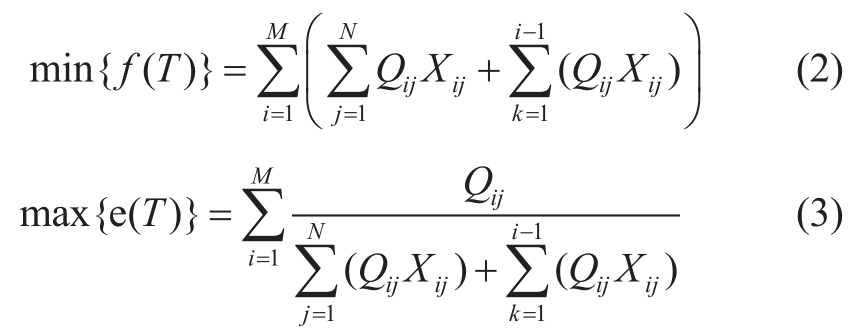
Equation (2) is the optimal scheme for task scheduling,and the cost of resource utilization is the lowest where f(T)is the total task execution cost.Equation (3) is the maximum efficiency of all tasks under the minimum cost, and e(T)represents the total efficiency of task execution.
Constraints are shown in Equations (4), (5), (6), (7), and (8).
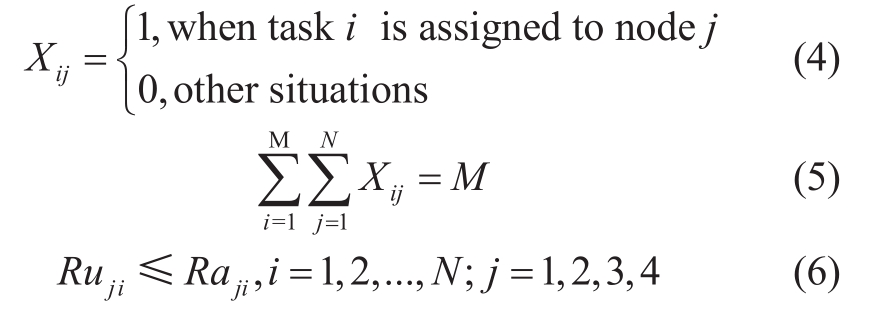
Equation (6) indicates that the resource requirements of the user-submitted tasks must be met at the same node.The available resources of nodes in an application change dynamically.
Equation (7) indicates that the completion cost of the user-submitted task is less than or equal to the maximum upper bound of user satisfaction.
In Equation (8), S(Tij) represents the satisfaction of the task i on node j, which has a negative exponential relationship with the execution cost of the number of tasks assigned on a node.
2.3 Particle swarm optimization algorithm
The task assignment scheme was solved using a particle swarm optimization algorithm.PSO has the advantages of a simple process, few algorithm parameters,and fast search speed, and is suitable for task-scheduling scenarios of energy Internet operation platforms.In PSO,all particles have their own position and an adaptive value in space, and each particle has the speed to determine the direction of flight.Then, the particles follow the current optimal particle to search the solution space and find the optimal solution through iterations.In each iteration, the particle updates itself by tracking two “extremes”.One is the optimal solution found by the particle itself, which iscalled individual extremum pbest.The other extremum is the optimal solution found by the entire population thus far, and this extremum is the global extremum gbest.

The iterative updating methods of the velocity (vt) and displacement (xt) of the core of PSO algorithm are shown in Equations (9) and (10), where t denotes the number of iterations.c1 and c2 are the acceleration constants used to adjust the maximum learning stride length.r1 and r2 are random functions with values in the range [0,1].They can add to the search randomness.The particle position is represented by vector X in Equation (10), indicating that task n is assigned to node xi, where1≤xi≤N.The velocity is represented by a vector of Vx bits, as shown in (12),where−N ≤ v x i ≤N.The initial ion position xi is an integer between (1 and N), and the ion velocity is a random integer between [-(N-1), (N-1)].The standard process of PSO algorithm is adopted to solve the task allocation scheme,in which Equations (2) and (3) are objective functions, and Equations (4-8) are constraints.

2.4 Technical solutions
The energy Internet operation platform, which involves different users such as individuals, enterprises,and governments, needs to deal with complex and diverse tasks such as energy consumption analysis, economic analysis, energy transaction, and energy Internet simulation.To ensure the correct and efficient execution of tasks, a distributed scheduling architecture was adopted for task scheduling.This study adopts a master/worker architecture to realize task-distributed scheduling, as shown in Fig.2.The system adopts one master and multiple workers.

Fig.2 Distributed task-scheduling architecture
The master is at the core of the task-scheduling system.It receives, publishes, monitors, and manages tasks;regularly scans the task table; obtains scheduled tasks and checks dependencies and timeouts; obtains worker information from the worker module; schedules tasks to appropriate workers based on the quartz module; and starts the rescheduling service for the scheduled but not running task batches.Workers correspond to the physical machine that actually executes the scheduled tasks and can execute tasks independently, which is a specific manifestation of the distributed characteristics of the task-scheduling system.Each worker can send a jar (Java archive, a software package file format of Java) package to grids for storage,and hand over the script task to the shell for running.A shell is a command interpreter that executes script commands in each worker and notifies the master of the start and end of tasks by the worker.
The distribution-based task-scheduling process includes generating task batches, task dependency checking, task timeout checking, and task-scheduling.The task-scheduling process within a cycle is illustrated in Fig.3.

Fig.3 Distributed task-scheduling process
1) Generate task batch
The task batch is generated by periodically and regularly scanning the task table to obtain the scheduled and manual tasks of energy Internet services, including task batch and related configuration, task dependency path and output path,third-party dependency, and logical parent dependency of the task.Only the batch is generated, and the task is not executed.The task batch is in the waiting state.
For scheduled tasks, the trigger tasks with month,week, day, hour, and minute as the output cycle, generates task batches to be executed, stores relevant configuration information in the task batch table, analyzes the dependency and output path of the task batch, third-party dependency,and logical parent dependency according to the definition of the task, and stores them in the task batch slave table.
Users can manually execute or rerun tasks to generatebatches.The execution task-scheduling time is the current time and the rerun task time interval can be entered by users.The rerun function can choose to schedule only the task itself or cascade scheduling.When cascade scheduling is selected, in addition to generating the corresponding batch of this task, it triggers the task dependent on this task to generate the corresponding batch.
2) Task dependency check
The dependency status of the task batches is periodically checked to obtain the dependency status check results.Dependency status checks include dependency and output path, third-party dependency, and logical dependency checks.The distributed scheduler triggers the dependency check service periodically (every 30 seconds).The dependency check service first queries the batch in which the enabled task is waiting, and checks whether the dependency is met from the task batch table.
3) Task timeout check
It periodically checks the task batch that depends on the timeout and output timeout in the scheduling system,notifies the relevant person in charge of the overtime task batch in the form of an alarm, and sets the task batch status to dependency timeout or output timeout status.The 10th second of every minute triggers the dependency timeout check and the task execution timeout check.
The dependency timeout check refers to the batch whose status in the query task batch table is waiting, the dependency timeout is configured, and the scheduling time plus dependency timeout setting is earlier than the current time.The queried batch is a batch with a dependency timeout.The output timeout check queries the batch whose completion status is incomplete, and the output timeout is configured in the task batch table, and the scheduling time plus output timeout setting is earlier than the current time.The queried batch is the batch with output timeout.
4) Task scheduling
The master obtains the information of workers from the task batches whose dependent status check results and timeout status check results meet the preset requirements, and the task assignment scheme is solved using PSO.The task is then scheduled.The scheduling method is presented in Algorithm 1.
For tasks in the scheduled but not running state, the next task scheduling reallocates the executable nodes and updates the task running status to be allocated, the allocation time to the current time, and the allocation node to the new node.Subsequently, in the reassign log table, links this batch to the last allocation information.
2.5 Analysis of technical solutions

The energy Internet operation platform provides services for energy users, enterprises, suppliers, and government businesses.Owing to the large number of tasks on the platform, the task-scheduling algorithm must be efficient and easy to implement.Given the continuous submission of tasks on the platform, the algorithm should quickly process the tasks, realize task scheduling, and assign tasks to appropriate nodes for execution.
Classical task-scheduling algorithms include the firstcome first-served (FCFS) and minimum execution time(MET).These algorithms are simple to implement, but cannot consider the overall efficiency of task scheduling globally.Genetic algorithms, simulated annealing, and other algorithms comprehensively consider the global problem of task scheduling, but there are some problems, such as complicated implementation and slow algorithm iteration speed.The optimization PSO algorithm proposed in this paper has the advantages of easy implementation, fewer algorithm parameters, and fast search speed.A comparative analysis of the task-scheduling algorithms is presented in Table 1.
Table 1 Task-scheduling algorithm comparison
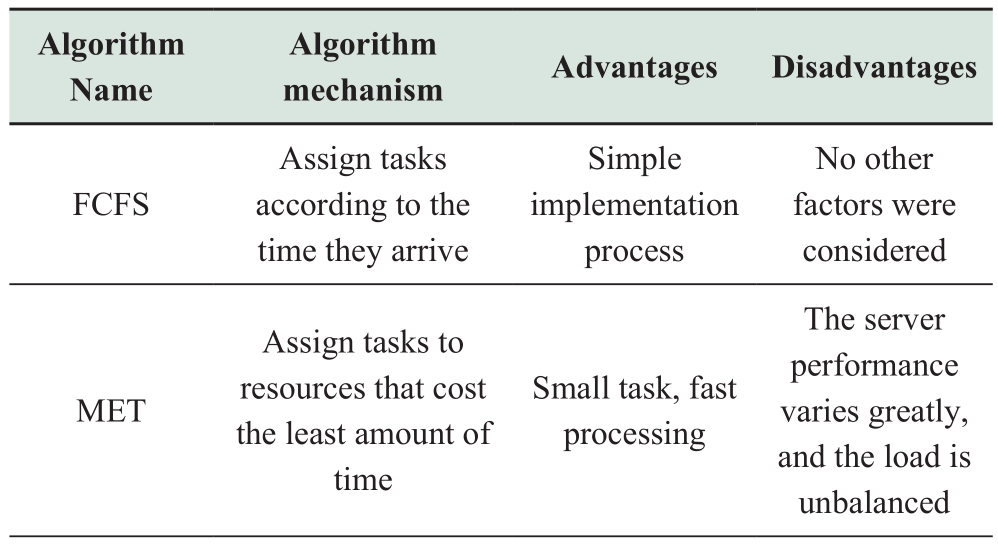
continue
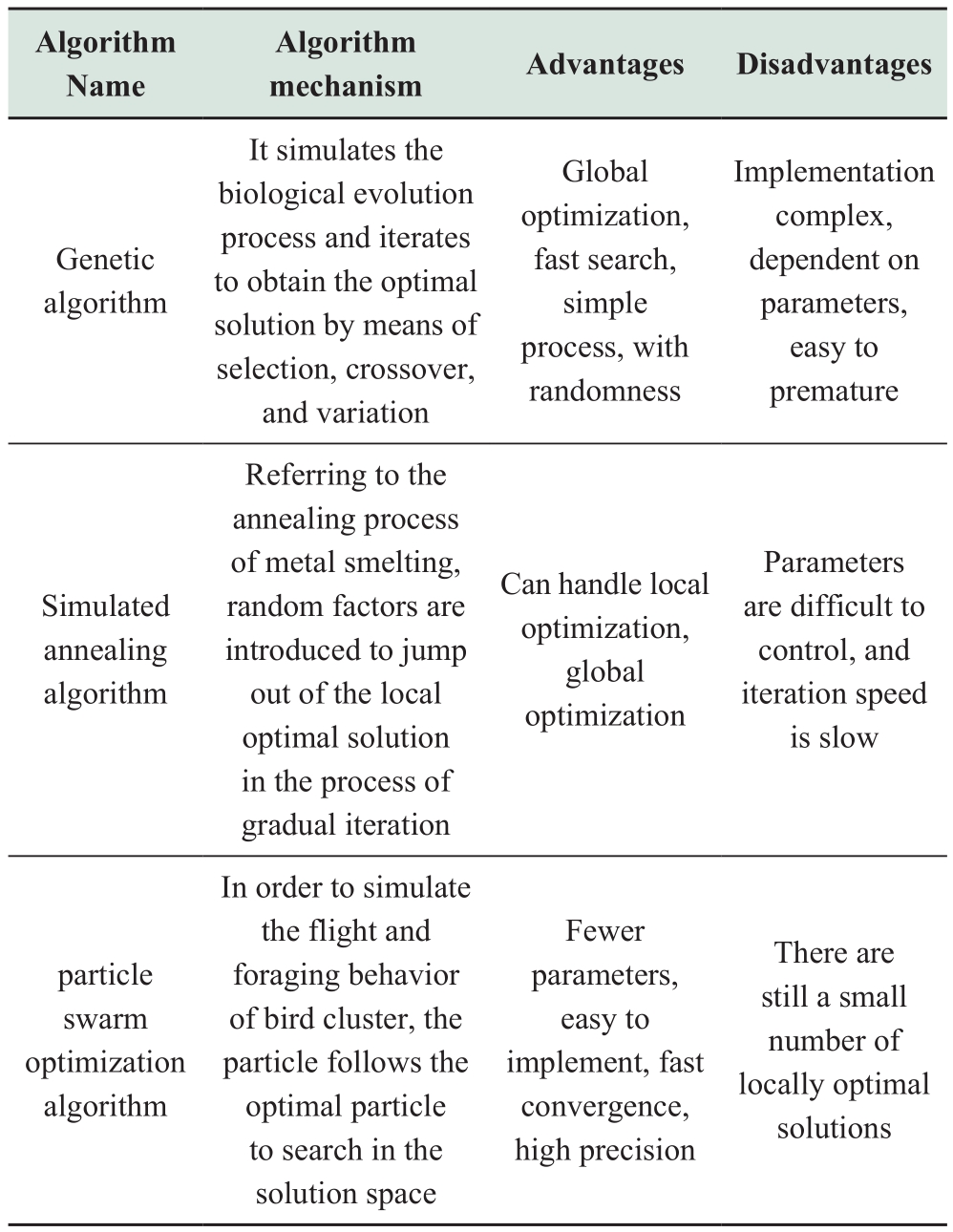
At present, the PSO algorithm is integrated into the task-scheduling module of the energy Internet operation platform.The algorithm provides scheduling calculation services for tasks, such as energy consumption analysis,energy operation, energy transaction, and economic analysis of the platform.The average number of scheduling tasks per day exceeds 5000, effectively ensuring the development of the energy internet business.
3 Concurrent access processing technology for massive users
3.1 Problem analysis
With the continuous development of the energy Internet business and the explosive growth of business complexity and platform data, the scale of users of energy Internet operation platforms is huge; therefore, it is necessary to solve the problem of concurrent processing of a large number of users.At present, the following problems still exist in dealing with large concurrency and processing logic:
1) When the number of users visiting the energy internet operation platform at the same point in time is too large, the platform service portal can be paralyzed.
2) The energy Internet operation platform has a large amount of unstructured data, such as pictures and videos,which will have high traffic requirements and require more and greater bandwidth.
3) There is a huge amount of data on the energy internet operation platform.If the data of a single entity are entered into a table, there is the problem of slow data storage and query.
3.2 Technical solutions
To improve the interactive experience of the energy Internet operation platform service portal, it is necessary to design a technical architecture that meets the highconcurrency requirements.Based on the interactive service process of the platform service portal, concurrent processing ability is improved through caching, load balancing, page static, data table, and other technologies.Specific technical solutions are presented in Fig.4.As the client, the browser local cache is used to reduce the user’s access to the server,which is transferred to different servers through load balancing.The access bandwidth is reduced through HTML static and image server separation, and part of the data is saved in memory through program code to reduce access to the database.The high throughput of the database is improved by splitting database and data table.
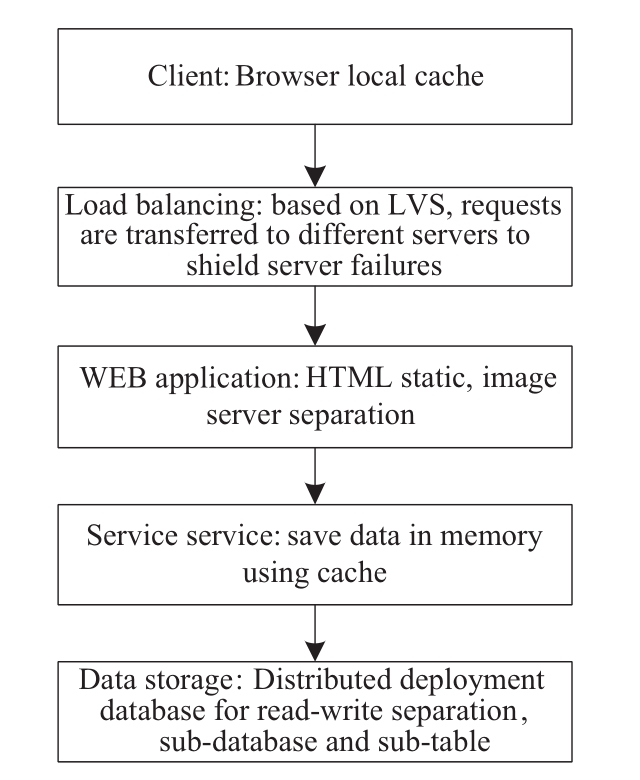
Fig.4 Concurrent Processing Technology Solutions
3.3 Technical realization
1) Client cache
The client of the service portal interactive system of the energy internet operation platform adopts a browser caching mechanism.There are two types of browser caches.The first directly obtains a response from the local cache.This method is fast and saves traffic without sending requests to the server.The local cache contains unchanged images, such as a logo, icon, JS script, CSS static file,downloadable content, and media file.The second problem is the negotiation cache.When the browser fails to hit the local request, the request header sends verification data to the server.If the server data does not change, the browser responds to the local cache,and the returned status code is 304.The negotiation cache contains HTML files, frequently replaced pictures, modified JS scripts, and CSS files.Both of these caches fail, and the server returns a complete response.
2) Load balancing
The load-balancing server is realized using Linux virtual server (LVS) technology.The client accesses the network service using a virtual IP address.When the request message arrives at the scheduler, the scheduler selects a server from a group of real servers according to the connection-scheduling algorithm, rewrites the target address of the message virtual IP address into the address of the selected server, and rewrites the target port of the message into the corresponding port of the selected server,Finally, the modified message is sent to the selected server.Simultaneously, the scheduler records the connection in the connection hash table.When the next message of the connection arrives, the address and port of the original selected server can be obtained from the connection hash table, the same rewriting operation can be carried out, and the message is transmitted to the original selected server.
The load-balancing scheduler uses a weighted minimum connection-scheduling algorithm to select the target server.We define the server set S = {S0, S1,..., Sn-1}, W(Si)represents the weight of server Si, and W(Si) is not equal to 0.C(Si) represents the current number of connections of the server Si.The sum of the current connections of all servers is denoted as Csum.The current new connection request is sent to server Sm only if server Sm satisfies Equation (14).

Because Csum is a constant in this round of search, (14)can be simplified to (15).
In this method, the client only sees the services provided on the virtual IP address and the structure of the server cluster is transparent to the user.
3) HTML static, image server separation
In a large-scale interactive system, a purely static webpage is the most efficient and consumes the least amount of time.Therefore, the web page of the service portal of the energy internet operation platform adopts the static HTML page, which is the simplest and most effective method.HTML static is also used by some caching strategies.For applications that frequently use database queries in the system but have few content updates, HTML static can be used.Information on public settings can be managed in the background and stored in a database.A large amount of this information is called by the foreground program, but the update frequency is very small.This part of the content can be statically updated in the background to avoid numerous database access requests.
For the web server, the image is the most resourceintensive and can be separated from the page.This architecture can reduce the pressure of the server system,provide page access requests, and ensure that the system will not collapse due to image problems.Different configuration optimizations can be performed on the applications and image servers.For example, Apache can support as few load modules as possible when configuring a content type to ensure system consumption and execution efficiency.
4) Server cache
Most of the characteristics of accessing data are presented as the “20-80 law”: 80% of business access is concentrated on 20% of the data.When energy Internet users reach a certain scale, the database Input/Output becomes a performance bottleneck.Cache technology is used to store frequently accessed data in memory.Program code can be saved directly in memory or other caching frameworks such as Redis, Ehcache, Memcache can be used.To solve the problem of cache server failure, multiple servers can be used to cache the same data, which can be controlled through distributed deployment.When one fails, it can be automatically switched to other machines or reassigned to the cache server when the cache server returns to normal use through hash consistency.Another function of hash consistency is to locate the data under a distributed cache server and distribute the data on a non-cache server.
The cache algorithm uses the least frequently used algorithm (LFU).This is based on the idea that if a piece of data has been used infrequently in the recent past, it is less likely to be used in the future.
If Dk is the kTH data block in the cache, Fk is the number of times the kTH data block is accessed in the last t time,and N is the size of the cache data block, then the cache data block to be replaced when the data are not matched is Dm if and only if Dm meets Equation (16).
5) Sub database and sub table of database
Part of the data on the energy internet operation platform is stored using relational data.The relational database caneasily become a system bottleneck as the storage capacity,connection number, and processing capacity of a single machine are limited.When the data volume of a single table reaches 10 million or 100 g, due to the large number of query dimensions, the performance degrades significantly in complex operations by the addition of slave databases and optimizing indices.This process must be segmented to reduce the burden on the database and shorten query time.The core of the distributed database is data segmentation and the positioning and integration of the data after segmentation.Data segmentation stores data in multiple databases to reduce the amount of data in a single database.By expanding the number of hosts, the performance problem of a single database can be alleviated to improve the operational performance of the database.
According to business coupling, the energy internet operation platform stores different tables with low correlations in different databases.This method is similar to splitting a large system into multiple small systems.It is divided into separate databases according to business classification.It solves coupling at the business system level through a sub-database and carries out hierarchical management, maintenance, monitoring, and expansion of data of different businesses.In high-concurrency scenarios,vertical segmentation can improve the IO bottleneck,database connections, and stand-alone hardware resources to a certain extent.
On the database side, the energy Internet operation platform needs to decompose a large table into multiple entity tables (sub-tables) with independent storage space according to certain rules, with each table corresponding to the MYD, MYI, and FRM table structure files.These sub-tables can be distributed on the same disk or different machines.During the database read-write operation, the corresponding subtable name is obtained according to predefined rules, and then the read-write operation is carried out to lock the small data range based on the business rules.
3.5 Analysis of technical solutions
The concurrent processing technology for massive users proposed in this study optimizes the entire operation of user access processing.Client caching reduces unnecessary data downloads and improves the response times.Load balancing deploys multiple servers to process user requests and selects servers with low loads to respond to users.This helps users respond quickly to tens of millions of users.The server cache directly stores data with high usage in memory to respond efficiently to various queries.The database subtable and image server are separated from the data storage level to optimize the processing and improve the ability of fast data retrieval.
At present, the energy internet operation platform has deployed two load-balancing servers, serving more than 500000 users, and the user access response time is less than 1 s.With the increase in users, this scheme can easily expand the relevant servers and improve the concurrent processing ability of users.The concurrent processing technology solution based on the whole process optimization can meet the efficient access requirements of massive users of the energy Internet operation platform and provide users with a better user experience.
4 Conclusion
The energy internet operation platform provides basic support for the interaction, transaction, operation,and operation management business of market subjects,including individual users, enterprises, suppliers, and governments.The platform has many users, complex businesses, and data analysis and mining tasks.This paper focuses on task scheduling and concurrent user processing and conducts the following research:
1) Aiming at the problem of platform large-scale task scheduling, a distributed task-scheduling technology architecture based on PSO is proposed, and technical implementation methods of task batch generation, task dependency check, task timeout check, task scheduling,and task rescheduling are provided to solve the problem of platform large-scale task scheduling.
2) Aiming at the problem of concurrent processing of massive user access on the platform, this paper proposes a technical solution of concurrent processing from an overall perspective, improves the concurrent processing ability from the aspects of client caching, load balancing, page static,library table separation, and so on, and solves the problem of concurrent access for more than ten million users.
With the development of energy Internet technology,an increasing number of subjects will participate in it, and the number of businesses and users of energy Internet operation platforms will increase rapidly.The distributed task scheduling and massive user concurrent processing technology proposed in this study will play an increasingly important role.At the same time, with the development of business and the increase in data, continuously optimizing the ability of the energy Internet operation platform will be the focus of the next step.
Acknowledgements
This work was supported by the Science and Technology Project of State Grid Corporation “Research and Applicationof Internet Operation Platform for Ubiquitous Power Internet of Things” (5700-201955462A-0-0-00).
Declaration of Competing Interest
We declare that we have no conflict of interest.
References
[1]Yu XD, Xu XD, Chen SY, et al.(2016) A brief review to integrated energy system and energy internet.Transactions of China Electrotechnical Society, 31(1): 1-13
[2]Qi LH, Chen SL, Ren X, et al.(2016) The energy interconnection information characteristics and its cloud-based processing technology.Electric Power Information and Communication Technology, 14(9): 28-32
[3]Zheng YP, Wang D, Wan C, et al.(2019) Key technology and application of energy internet oriented to new-type towns.Automation of Electric Power Systems, 43(14): 1-15
[4]Huang WJ, Zhang N, Dong RB (2018) Construction of regional energy internet: concept and practice.Journal of Global Energy Interconnection, 2: 103-111
[5]Ma Z, Zhou XX, Shang YW, et al.(2015) Exploring the concept,key technologies and development model of energy internet.Power System Technology, 11: 3014-3022
[6]Wang JY, Meng K, Cao JW, et al.(2015) Information technology for energy internet: a survey.Journal of Computer Research and Development, 52(5): 1109-1126
[7]Dou X, Wang J, Wang XY, et al.(2019) Analysis of user demand side response behavior of regional integrated power and gas energy systems based on evolutionary game.Proceedings of the CSEE, 1-11
[8]Xu Z, Sun YH, Xie DL, et al.(2019) Optimal configuration of energy storage for integrated region energy system considering electric/thermal flexible load.Automation of Electric Power Systems, 1-10
[9]Li ZL, Liu RH (2019) Operation optimization of regional integrated energy system with energy storage considering demand response.Modern Electric Power, 36(6): 61-67
[10]Yang F, Bai CF, Zhang YB (2015) Research on the value and implementation framework of energy Internet.Proceedings of the CSEE, 35(14): 3495-3502
[11]Wang XH, Liu P, Ji ZX, et al.(2020) Key technology and application of sharing operation platform for energy internet.Electric Power ICT, 18(001): 46-53
[12]Wang XH, Ji ZX, Zhou Y (2021) Comprehensive service platform architecture and key technologies of urban energy internet.Proceedings of the CSEE, 41(7): 2310-2320
[13]Yao C, Zhang Z, Yu JC, et al.(2018) Research on operation and management muti-node model of mega city energy Internet.Global Energy Interconnection, 2: 130-136
[14]Hua HS, Gan L, Wu ZL, et al.(2018) Data platform of energy internet based on techniques of internet of things.Distribution &Utilization, 35(1): 40-45
[15]Zhao Q, Zhou HM, Liu CQ, et al.(2017) Research platform construction of energy internet.Smart Grid, 5(2): 218-224
[16]Guo QL, Wang BH, Tian NF, et al.(2020) Data transactions in energy internet: architecture and key technologies.Transactions of China Electrotechnical Society, 35(11): 2283-2295
[17]Wang XH, Liu P, Ji ZX (2021) Trading platform for cooperation and sharing based on blockchain within multi-agent energy internet.Journal of Global Energy Interconnection, 4: 384-393
[18]Liu YX, Xu HC, Jiang B, et al.(2019) Energy internet ecosystem based on charging and vehicular network platforms.Journal of Global Energy Interconnection, 5: 492-501
[19]Guo M, Xia MC, Cheng QF (2021) A review of time-delay complex dynamic network model and measurement indexes for regional energy internet.Journal of Global Energy Interconnection, 3: 235-248
[20]Amudha T, Dhivyaprabha TT (2011) QoS priority based scheduling algorithm and proposed framework for task scheduling in a grid environment.International Conference on Recent Trends in Information Technology
[21]He K, Zhao Y, Chen Y (2007) Analysis and solutions for multitasks scheduling in distributed environments.Systems Engineering-Theory & Practice, 27(5): 119-125
[22]Palis M A, Liou J C, Wei D (1996) Task clustering and scheduling for distributed memory parallel architectures.IEEE Transactions on Parallel & Distributed Systems, 7(1): 46-55
[23]Palis M A, Liou J C, Wei D (2002) Task clustering and scheduling for distributed memory parallel architectures.IEEE Transactions on Computers, 51(4): 444-448
[24]Sameer S C, Joshi R C (2010) JOSHI.QoS Guided Heuristic Algorithms for Grid Task Scheduling.International Journal of Computer Applications, 2(9): 24-31
[25]Kokilavani T, George DI (2011) Load balanced min-min algorithm for static meta task scheduling in grid computing.International Journal of Computer Applications, 20(2): 42-48
[26]Wang ZG, Zhao CX (2021) Task scheduling of fog computing based on genetic ant colony algorithm.Computer Applications and Software, 38(8), 291-297
[27]Habib SJ, Al-kazemi BS (2005) Comparative study between the internal behavior of GA and PSO through problem-specific distance functions.In 2005 IEEE Congress on Evolutionary Computation.2190-2195
[28]Chen D (2018) Research and application of high-concurrent access server based on Nginx.Chinese Academy of Sciences
[29]Zhang WS, Chen T, Li K (2018) Comparative study on principle and strategy of nginx high concurrent load balancing.Industrial Control Computer, 31(1): 85-89
[30]Kong DY (2017) Research and application of large concurrency problem based on fast DFS.North University of China, 2017
[31]Cheng Y, Li XY, Dong XM, et al.(2014) Design and implementation of a highly concurrent client in distributed storage systems.Journal of Chinese Computer Systems, 35(1): 24-29
[32]Qin JL, Zhu YC, Li YK (2006) Research of key technologies based on grid computing.Computer Technology AndDevelopment, 16(11): 103-108
[33]Guo C, Yu L (2009) Research on algorithm for tasks scheduling in grid.Computer Technology And Development, 19(6): 5-8
[34]Zhang ZP, Liu XY (2008) Static heuristic task scheduling algorithm in the grid.Journal Of Computer Research And Development, 45(z1): 21-25
[35]Tian ZJ, Huang ZC, Zhang YN (2021) Review of task scheduling methods in cloud computing environment.Computer Engineering and Applications, 57(2): 1-11
[36]Lu CZ, Gong JX, Zhu L, et al.(2021) Research on task scheduling algorithm in resource-constrained environments.Systems Engineering and Electronics, 43(12): 3586-3593
[37]Muthuvelu N, Liu JY, Nay L S, et al.(2005) A dynamic job grouping-based scheduling for deploying applications with fine-grained tasks on global grids.In Proceedings of the 2005 Australasian workshop on Grid computing and e-research.2005:41-48
Received: 28 March 2022/ Accepted: 21 July 2022/ Published: 25 December 2022
Zhixiang Ji
jizhixiang@epri.sgcc.com.cn
Xiaohui Wang
wangxiaohui@epri.sgcc.com.cn
Dan Wu
327242642 @qq.com
Biographies

Zhixiang Ji received a Master’s degree at the Harbin Institute of Technology, Nangang District, Harbin, 2011.He currently works at the China Electric Power Research Institute Co.Ltd., Haidian District, Beijing.His research interests include the application of artificial intelligence (AI) technology in power systems.

Xiaohui Wang received a doctoral degree at North China Electric Power University, Beijing in 2012.He currently works at the China Electric Power Research Institute Co.Ltd.,Haidian District, Beijing.His research interests include power big data technology, artificial intelligence, active distributed networks, and the Internet.
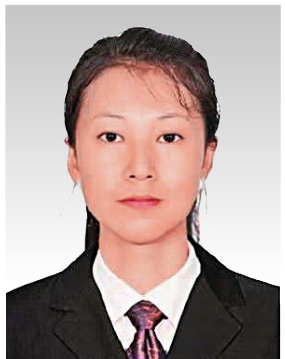
Dan Wu received a master’s degree at the University of Electronic Science and Technology of China, Chenghua District,Chengdu, 2012.She currently works at the State Grid Fujian Electric Power Research Institute, Cangshan District, Fuzhou, China.Her research interests include the application of information security technology in power systems.
(Editor Yanbo Wang)
